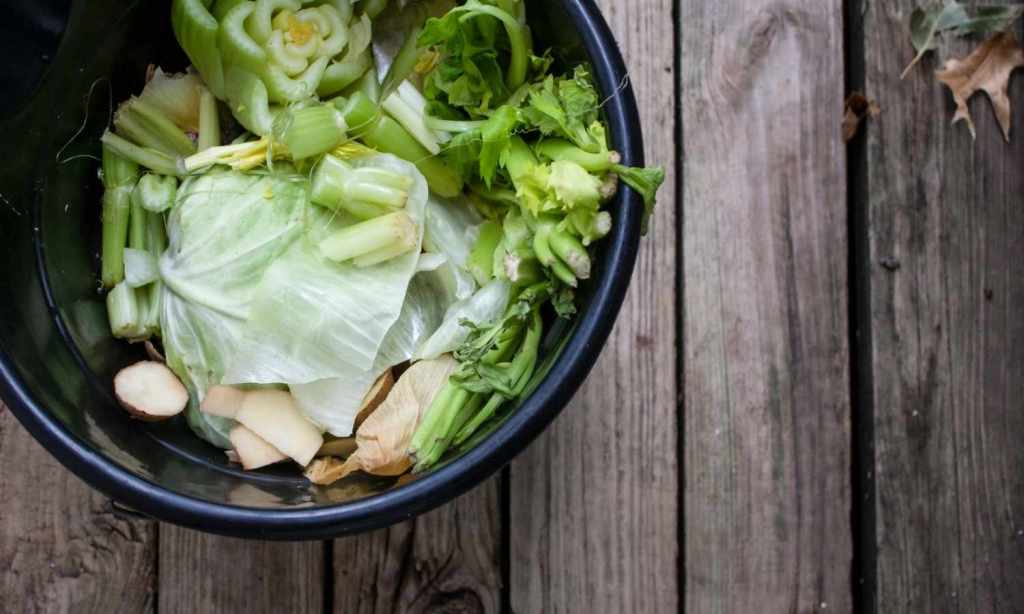Do you cut off and ditch the stems of your romaine? Or the little spuds from your sweet potato? Time to revisit your trashing habits and the trashcan. These little bits and bobs in the trash are able to help you regenerate new life, which will save you some dollars and also grow your appreciation for the food you eat.
Food scraps broadly refer to the trimmings, core, seeds, skin, and roots of fruits and vegetables. Below, we’ll share with you five classic ways to regrow from mainly the stems and roots.
Growing Herbs — Mint, Thyme and Oregano
Let’s start with the easiest — herbs! We get plenty of these in boxes from hypermarkets and your local grocer. Avoid keeping them in the fridge wrapped in paper where they are not used to their fullest.
Instead, take out a few stalks, cut them diagonally, and remove any extra leaves from this point before submerging the stalk in water. Leave this cutting in an area with sufficient sunlight. Herbs like mint, basil, and thyme are able to grow wonderfully from stem cuttings. From excess to extended, now you can go from buying a bunch of herbs to growing a branch of herbs.
Regrowing Celery
All parts of celery are excellent — from root to leaves, these are often added to power salads or juiced up for morning shakes. How can you save your celery stalk? Simply trim the last portion of the celery stalk and dangle about 2cm of the root through a skewer above a shallow dish of water. In a few weeks, you should see leaves growing from the middle of the cutting. This can be harvested immediately or replanted in your garden in the soil in a warm and sunny spot.
Regrowing Sweet Potato Leaves
Sweet potato and its plain ol’ brother, potatoes are great carb options for late-night dinners. However, they sometimes sit too long on the shelf and grow spuds. Instead of fussing about the spuds, simply place the un-cut and un-washed potato in a jar of water. The bottom part of the potato should sit comfortably in the mouth of the jar.
After some weeks, you will notice roots growing, and soon after, little leaves growing from the stems of the spuds. Although you will not be growing brand new tubers, these leafy greens are more nutritious than their starchy partners. In Asian cuisine, these sweet potato leaves are cooked in sesame oil with bird’s eye chilli and some shallots for a real spicy take on these demure leaves.
Regrowing Leafy Greens — Romaine, Bok Choy and Lettuce
Leafy greens are superfoods with dense nutrients like folate, zinc, calcium, iron and, magnesium. However, many people usually cut the stems and roots and only cook the leaves. Here’s how you can save the stems — cut them out towards the last 3cm of the stems, close to the rooting section, and then place them in a dish of water. You will notice leaves sprouting from the cross-section retaining the rooting section, placing it in water, and waiting for a second flush of leaves to grow.
Regrowing Spring Onions
Vegetables in the allium family are great for garnishes and also bases in soups and stews. Your pantry staples can now give you new life if you keep the bulb of the vegetables with the roots intact. Place this portion of the vegetable in a dish of water and in one to two weeks, you should see green shoots! To keep the growing process, transfer the rooting vegetable with fresh shoots into the soil and place it in an area with full sun.
Recycling your food scraps is a rewarding way to understand how the food we eat grows and is harvested. As many Australians live in urban environments, we sometimes lose touch with this process. Next time you’re in the kitchen, hold onto those seeds and scraps with a newfound knowledge of how to treat and reuse them!
Read more stories from The Latch and subscribe to our email newsletter.

